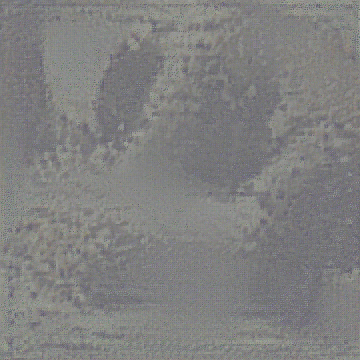Given Apple's consistent dishonest conduct on the subject I'm concerned that they'll simply add the examples here to their training set to make sure they fix those, without resolving the fundamental weaknesses of the approach, or that they'll use improvements in the hashing function to obscure the gross recklessness of their whole proposal. I don't want to be complicit in improving a system with such a potential for human rights abuses.
FWIW, the best defense we have against these kind of attacks is adversarial training. Adversarial training is exactly what you describe: construct evasions/collisions, train on them, and repeat. My initial interest in all this was to see whether Apple employed such a training method. It's clear they did not, but I see no reason they couldn't do this for their next version of this model.
Can you verify that these two images collide?

Here's what I see from following your directions: